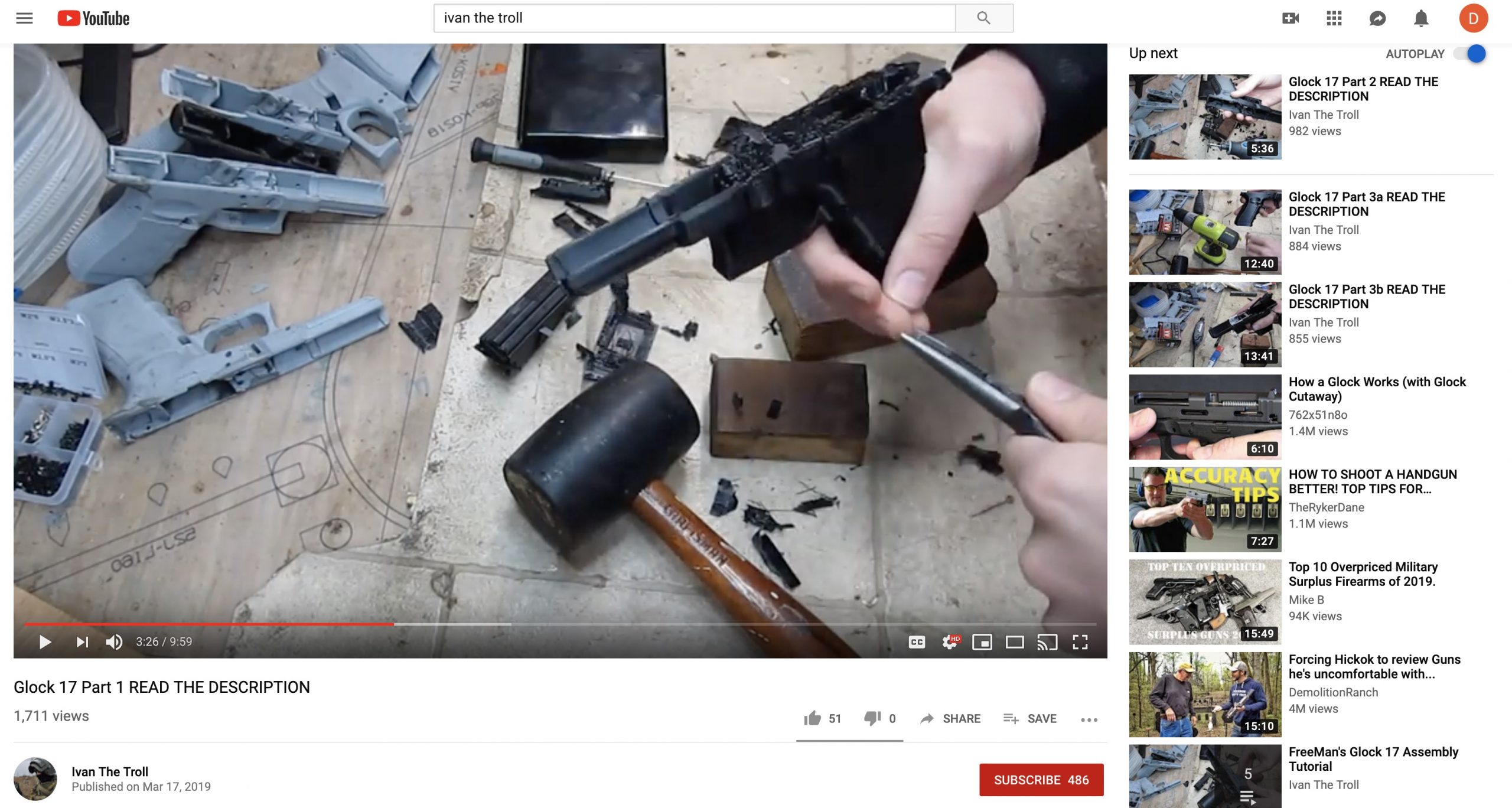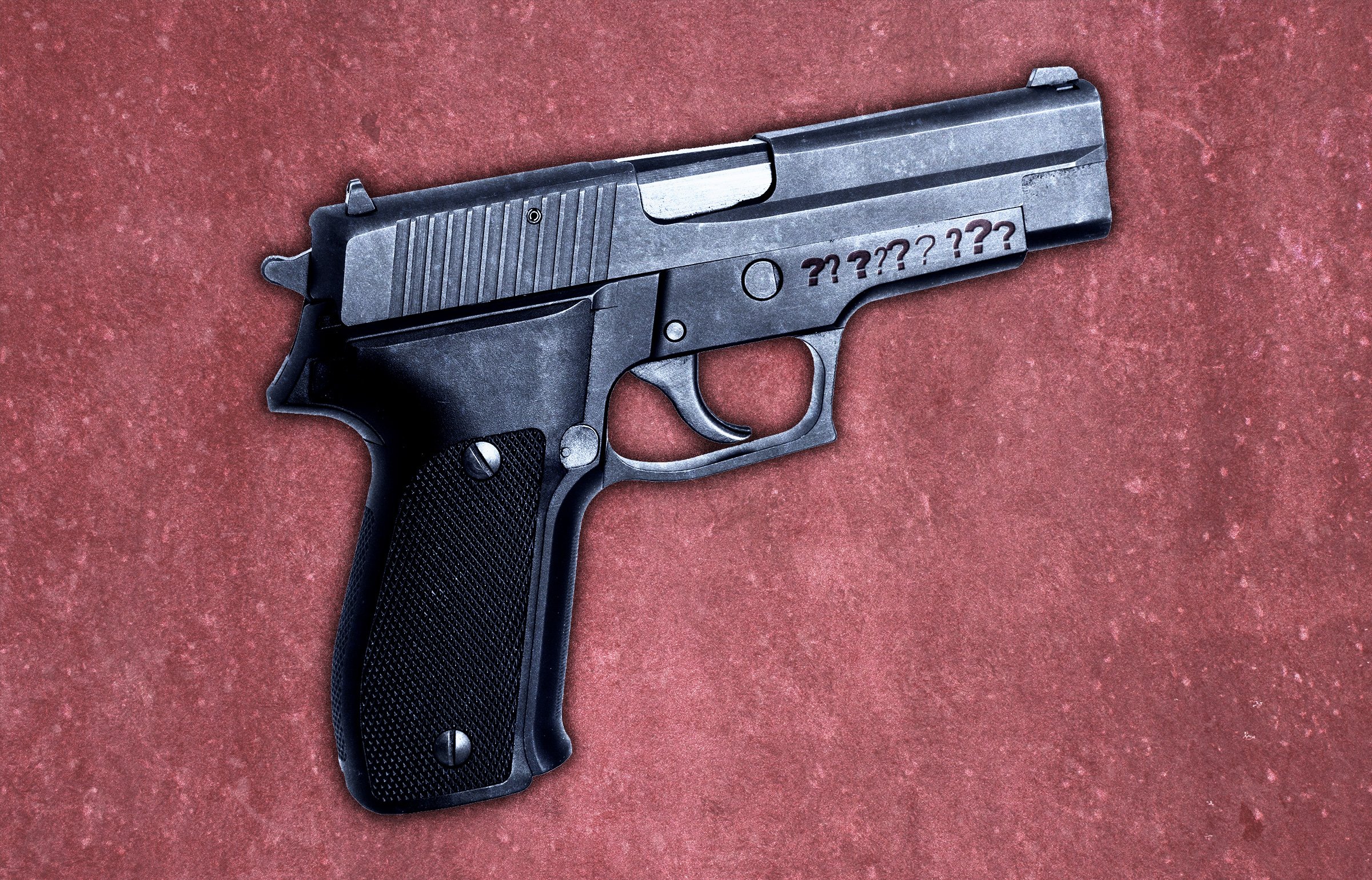Approximately two hours after publication, YouTube banned Ivan The Troll's account and a spokesperson provided comment: "We have strict policies that prohibit videos containing instructions on how to manufacture firearms, including 3D-printed guns. We quickly remove videos violating our policies when flagged by our users.“
Twitter says it bans the promotion of blueprints for 3D-printable weapons. YouTube’s policy explicitly prohibits videos that demonstrate how to make firearms. Despite these public proclamations, a review by The Trace finds that users on both social media platforms are freely distributing designs and instructions for assembling so-called ghost guns with few repercussions.
Among the accounts we found were users — some with thousands of followers — sharing the files to make a multitude of firearms and accessories, including magnums, AR-15s, Glocks, and bump stocks. A few of these Twitter posts have been retweeted or liked nearly 300 times. Some videos on YouTube have millions of views.
Senator Robert Menendez of New Jersey has pushed social media platforms to take more action against users sharing designs for DIY firearms. “It’s an unacceptable abdication of their responsibility,” he said of the platforms.
In an open letter to Twitter CEO Jack Dorsey in April, Menendez urged the company to block the distribution of 3D-printable gun blueprints. He singled out a user who went by the handle @IvanTheTroll12, who had been brought to the senator’s attention by his staff.
In an interview with Ivan (he did not want to reveal his real name), he confirmed to The Trace that he has been posting gun blueprints to various social media platforms for several months. Ivan identified himself as a libertarian who supports gun rights and opposes any effort to restrict the free distribution of information.
On April 12, over a month after Menendez’s letter, Twitter suspended Ivan’s handle, @IvanTheTroll12. A week later on April 19, Ivan reappeared under a new account name, which he has used to continue sharing more gun design files and is still active at the time of publication.
On April 29, over two months after the senator’s missive, Twitter sent Menendez what appears to be a form letter, in which the social media company said that the original Ivan account had been permanently removed. The company cited a corporate policy prohibiting the promotion of 3D gun printing on its site. But according to the text on Twitter’s website the company quoted from, that policy only applies to “Twitter’s paid advertising products,” not general users. The company’s letter said further that a “closer review” revealed Ivan’s account was disabled for “evading an account suspension.”
“It doesn’t take a rocket scientist to figure out that Ivan the Troll would end up opening a new account under another name,” Menendez said. “Social media platforms, which we applaud for allowing the public forum to take place, need to do self policing to ensure that public safety is preserved.”
In response to a list of questions concerning Ivan’s ban and Twitter’s policy on sharing 3D-printed gun files, a Twitter spokesperson pointed to a company policy separate from the rationale given to Menendez. “Accounts sharing 3D-printed gun designs are in violation of the Twitter Rules’ unlawful use policy,” the spokesperson wrote in an email, and pointed to the specific line from the company’s site: “You may not use our service for any unlawful purposes or in furtherance of illegal activities.”
New Jersey and California are the only states with laws prohibiting the distribution of guns and gun designs that lack serial numbers and are therefore untraceable by law enforcement. Federal policy on the issue remains murky and subject to ongoing litigation. The Justice Department under President Donald Trump reversed Obama-era guidance and allowed an infamous distributor of online weapons blueprints, Defense Distributed, to publish 3D-printed gun files on First Amendment grounds. But in August of last year, a judge indefinitely blocked the company from publishing the files.
With the law on sharing gun files across jurisdictions remaining unsettled, Menendez said he believes social media platforms should take a more active role in keeping the files off their networks.
Last year, he was one of five senators who signed an open letter urging Twitter, Facebook, Google (YouTube’s parent company), Microsoft, Reddit and other tech firms to prevent 3D gun blueprints from circulating.
For his part, Ivan said he believes that nothing in the company’s rules or terms of service prevents the sharing of gun plans. He said that when his account was temporarily suspended, it was not for anything related to gun plans, but for a separate instance of “hateful conduct.” He says Twitter has not cited a specific tweet to justify its decision to bar his former handle.
“Twitter is a private company, so they can do as they please,” Ivan said. “The shady way in which they are doing it isn’t acceptable, however. Just come out and say you oppose this aspect of free speech if that’s the line you want to take.”
Ivan is also linking to his gun plans and hosting videos that show how to assemble the printed parts on YouTube. Unlike Twitter, the policy for Google’s streaming video platform explicitly prohibits content with the purpose of instructing viewers on how to make firearms.
Ivan is not alone in flouting YouTube’s policy. The user “Guy in a garage” has a video showing the assembly of a 3D-printed magnum with over 3,000,000 views. Another, “derwoodvw,” demonstrates a printed MP1 with links to design files.
On Twitter, the user @fosscad has over 3,000 followers and is openly sharing gun plans for AR-15s, Glocks, and AP-9s. The user @FreeSpeech4You boasts in one post, “Download A bump stock, an AR15, a 30 round mag – it’s all here baby.” Both refer followers to files hosted on the popular computer coding platform GitHub, a subsidiary of Microsoft. The files contain designs for grenades, ammunition, and firearm accessories. There is no language explicitly barring 3D-printed gun plans in GitHub’s terms of service.
GitHub did not immediately respond to a request for comment.
Other platforms have clearer policies in place forbidding or discouraging the distribution of gun blueprints. Facebook has an outright ban. And while Reddit is allowing its users to talk about Ivan’s 3D printed guns, the website is actively monitoring the discussion to ensure that overt links to Ivan’s designs are not shared.
“Let’s keep it to discussion in here and not sharing scary files so that we stay on the happy (and not banned) side of Reddit,” wrote one of the moderators in a subreddit thread about 3D-print ghost guns.

